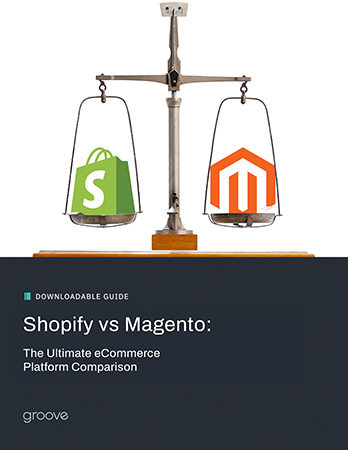Magento and its subsequent upgrades are definitely a powerful eCommerce platform, but even the most impressive tools can throw a wrench in the works sometimes.
Hitting a snag with your Magento store can feel like wrestling with a giant problem that just won't go away – frustrating and confusing!
Understanding common Magento issues and how to tackle them is the key to a happy online store and happy customers, and that's exactly what we're going to explore in the blog, along with the free community tools you have at your disposal to resolve these challenges.
Common Magento Issues and Challenges
Here are 5 of the most frequent Magento struggles and battle-tested solutions to get your store back on track:
- Slow and Sluggish? No one likes a sluggish store! Explore caching strategies and image optimization tricks, and consider a managed Magento hosting plan to keep things running smoothly.
- Upgrade Nightmares? Moving to a new Magento version can be a bumpy ride. Thorough testing in a separate environment and accurate consistent backups are your best friends here.
- Security Worries? Regular security updates and strong passwords are your first line of defense. Consider security extensions for an extra layer of protection. You may not have a choice, as certain laws require stringent security protocols for personal information depending on where you sell your products or conduct business.
- Extension Overload? While extensions and plugins can make your life a whole lot easier, too many of them can clash and slow down your store. Do a regular audit, deactivate unused ones, and make sure they're compatible with your Magento version.
- Customization Becoming Chaos? Customizations can make your store unique, but poorly coded ones can cause problems. Work with experienced Magento developers to ensure clean, efficient code.
How You Can Be Part of the Solution: The Magento Community
The Magento Forum is a bustling online community where you can find solutions, connect with other store owners, and even chat with Magento experts. Magento issues appear all the time, and the community is actively solving them. You can connect with other store owners and discuss tips and tricks for solving issues, tackling growth challenges, answering questions, and even keeping yourself accountable.
The Magento forum is a great way to turn your competition into allies, and you may just end up finding a business partner or potential stakeholder that aligns with your goals.
Here's some Magento etiquette to remember:
Search Before You Ask
Chances are, someone else has already faced your problem. You can use the search function to check if your problem has been clearly outlined with possible resolutions. Doing this will speed up your chances for a good answer and will also help the community to keep clear of repeat posts.
Be Clear and Concise
When you do post a question, give a clear picture of the problem, including error messages and any steps you've already tried. Be as specific as possible, a generic post will receive a generic response.
Join the Conversation
Solving Magento problems is a 24/7 endeavor. If you have found something that works, share it. Chances are, someone else is looking for the exact answer to their problems!
Get Technical Magento GitHub
Magento GitHub is a huge boon for those curious or technically inclined. If you encounter a confirmed bug, you can contribute to the greater good by reporting it on GitHub using the proper format.
This helps developers identify and squash issues efficiently. The Magento community thrives on collaboration to solve key Magento issues. Many clever minds share solutions and workarounds on GitHub. Take some time to explore these repositories – you might just find the perfect fix for your specific issue.
And for the tech-savvy individuals out there, consider contributing code improvements or bug fixes yourself. Your efforts can benefit the entire Magento community and keep the platform running smoothly for everyone.
There's More to the Story - Magento Resource To Get You Started
The Magento ecosystem offers a vast array of resources to empower store owners:
- Official Magento Guides: The official Magento documentation provides comprehensive guides and tutorials to steer you through various aspects of platform management.
- Webinars and Tutorials: There are many free and paid online resources offering in-depth knowledge on various Magento topics. Level up your skills with webinars and tutorials.
- Local Magento Events: Connect with other users and gain insights from industry experts at local Magento meetups or conferences.
Expert Magento Help When You Need It
While many Magento issues can be tackled with self-help resources, some situations require professional intervention. But how do you know when to call in the cavalry?
eCommerce stores aren't all built alike for the same purpose. Some require help with products, back-end, marketing, integration, and implementing services along with those products. customization is a huge need for Magento store owners, and a specialist can help you achieve that.
Maybe you excel at building a great supply chain and store, but you are worried about compliance or security protocols. A Magento expert can consult with you or implement the right tools for the job.
If you are clear and confident about both of these scenarios, partners can also hold you accountable and provide a fresh perspective on growth and stagnation challenges. Choose a developer or partner with a proven track record that will communicate with you regularly.
Groove Commerce Can Help With All Magento Issues
Do you feel like you're constantly wrestling with difficult Magento issues for your store? Our team of experienced Magento developers can help you identify and resolve common issues, optimize your store for performance, and ensure a secure and successful online presence.
Contact us today for a free consultation, and let's discuss how we can help your Magento store grow in the future.

eBook
Shopify vs Magento: The Ultimate eCommerce Platform Comparison
Explore tags:
About the author
Subscribe to the Groove Newsletter
Get the latest updates and insights straight to your inbox






